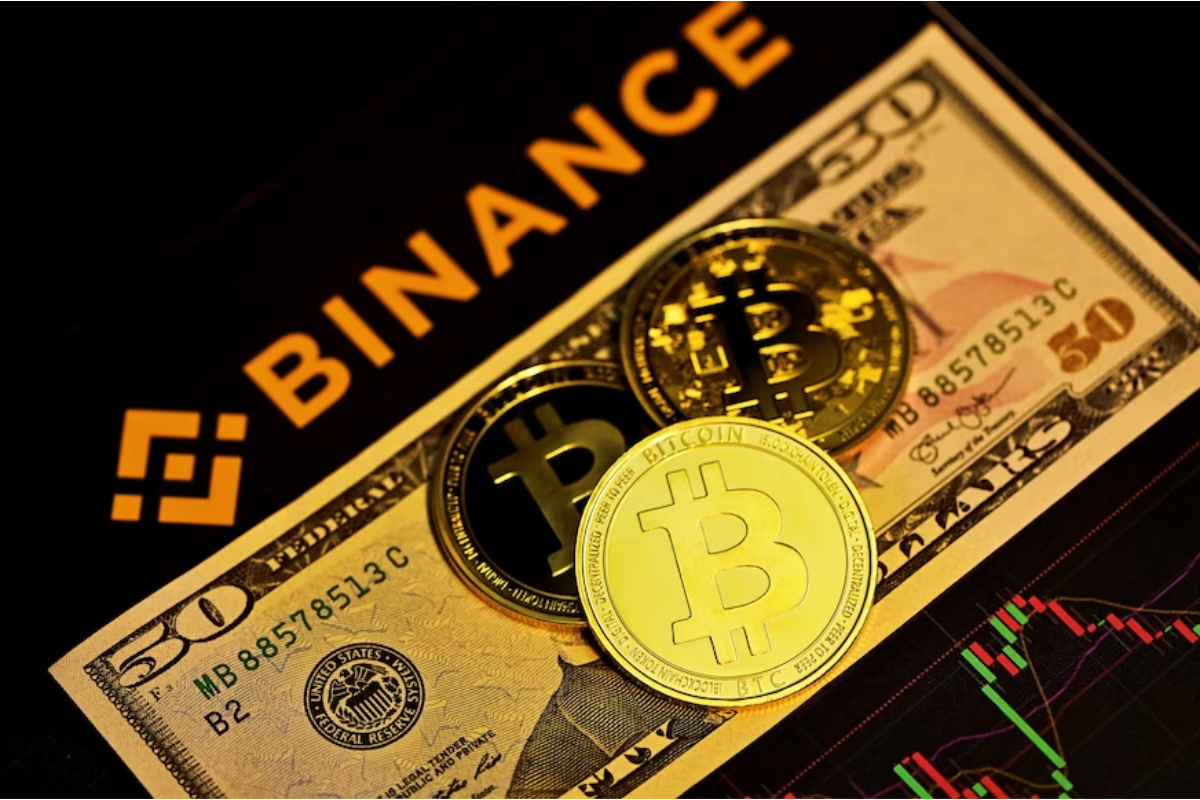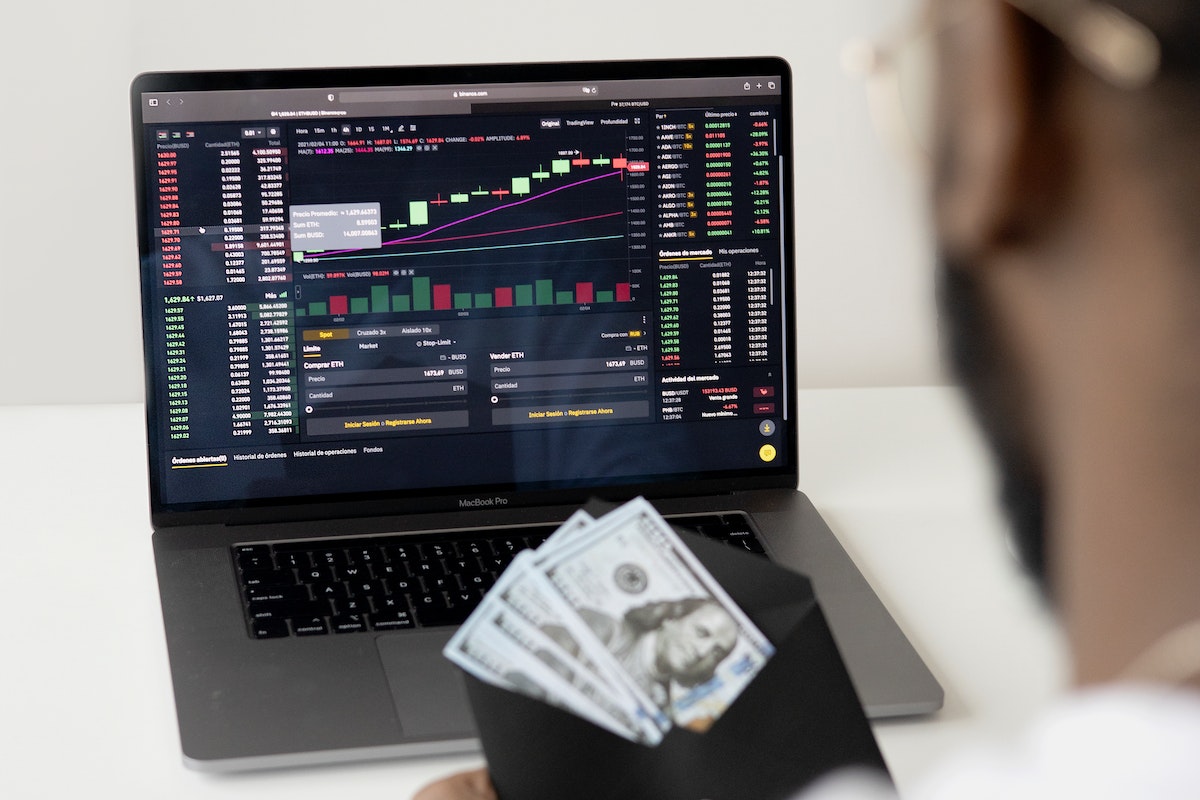Are you curious about how does Binance make money?
As one of the largest cryptocurrency exchanges in the world, Binance has a variety of revenue streams that contribute to its success.
Binance makes money primarily through trading fees and investments in cryptocurrencies, but it also earns revenue from other sources such as interest on crypto loans and cloud offerings.
When you trade on Binance, you’ll notice that there are fees associated with buying and selling cryptocurrencies.
These trading fees generate a significant portion of Binance’s revenue.
The exact fee you pay depends on your trading volume and whether or not you use Binance Coin (BNB) to pay for your fees.
Binance also earns money by investing in cryptocurrencies and earning capital gains when the price of these coins rises.
Post Contents
Binance: An Overview

If you’re interested in cryptocurrency trading, you’ve probably heard of Binance.
Binance is a cryptocurrency exchange founded in 2017 by Changpeng Zhao, also known as CZ.
The company is headquartered in the Cayman Islands and has offices in several other countries, including Malta and Singapore.
Binance has quickly become one of the largest and most popular cryptocurrency exchanges in the world.
As of 2023, it has over 25 million registered users and handles billions of dollars worth of trades every day. Binance offers a wide range of cryptocurrencies for trading, including Bitcoin, Ethereum, and many others.
One of the reasons for Binance’s success is its CEO, Changpeng Zhao.
Zhao is a well-respected figure in the cryptocurrency community and has a background in finance and technology.
He has been able to build strong relationships with venture capitalists and other investors, which has helped Binance grow quickly.
Binance has faced some challenges over the years, including regulatory issues with the Chinese government. However, the company has been able to adapt and continue to grow despite these challenges. Binance has also invested in other companies, such as Fusion Systems, which has helped it expand its offerings beyond just cryptocurrency trading.
Overall, Binance is a well-respected and popular cryptocurrency exchange that offers a wide range of trading options.
Whether you’re a seasoned trader or just starting out, Binance is a great option to consider.
How Does Binance Make Money?
Binance, the world’s largest cryptocurrency exchange, makes money in several ways.
In this section, we will explore the various methods that Binance uses to generate revenue.
Trading Fees
Trading fees are the primary source of revenue for Binance.
The exchange charges a 0.1% spot trading fee and a 0.5% fee known as a buy/sell crypto fee.
If you have Binance Coin (BNB) in your trading account, any crypto investments will be deducted from this total.
The use of BNB as a trading fee provides users with a discount on their trading fees.
Transaction Fees
Binance charges withdrawal fees for transferring cryptocurrencies out of the exchange.
The fee varies depending on the cryptocurrency and the amount being withdrawn.
The fees are designed to cover the cost of the transaction fees incurred by Binance when transferring the cryptocurrency to the user’s wallet.
Margin Fees
Binance offers margin trading, which allows users to trade with borrowed funds.
Users pay interest on the borrowed funds, which is how Binance generates revenue from margin trading.
Interchange Fees
Binance has a broker program that allows other businesses to offer cryptocurrency trading services to their customers.
Binance charges a fee for this service, which is called an interchange fee.
The fee is a percentage of the trading volume generated by the broker’s customers.
DeFi
Binance has recently entered the decentralized finance (DeFi) space.
The company has launched several DeFi products, including a decentralized exchange (DEX) and a DeFi staking platform.
Binance generates revenue from these products by charging fees for transactions and staking.
Business Model
Binance’s business model is centered around generating revenue from its trading platform.
The company earns its profit by charging fees for trading, withdrawals, and margin trading.
Binance also generates revenue from its broker program, DeFi products, and other services.
In conclusion, Binance generates revenue from various sources, including trading fees, transaction fees, margin fees, interchange fees, and DeFi products.
The company’s business model is focused on providing a platform for cryptocurrency trading and generating revenue from its services.
Trading on Binance

Trading on Binance is a straightforward process that allows you to buy and sell cryptocurrencies, tokens, and other digital assets.
Binance offers a range of trading options, including spot, futures, and options trading, depending on your preferences and experience level.
To start trading on Binance, you’ll first need to create an account and complete the necessary verification steps. Once you’ve done that, you can fund your account with cryptocurrencies like Bitcoin or Ether, or with fiat currencies like USD or EUR.
Binance offers a variety of trading pairs, including BTC, ETH, and USDT, which you can use to trade cryptocurrencies against one another.
You can place different types of orders, such as market, limit, and stop-limit orders, depending on your trading strategy.
Binance also offers margin trading, which allows you to trade cryptocurrencies with borrowed funds.
This can be a high-risk strategy, as it can amplify your gains and losses. So, it’s important to understand the risks involved and to have a solid trading plan in place.
In terms of fees, Binance charges a small percentage of the trading volume as a fee for each trade.
The fee can vary depending on the trading pair and the trading volume. However, if you hold Binance’s native cryptocurrency, Binance Coin (BNB), you can get a discount on trading fees.
Overall, trading on Binance can be a great way to trade cryptocurrencies and other digital assets.
With a wide range of trading options, low fees, and high trading volume, Binance is one of the most popular cryptocurrency exchanges in the world.
Binance Coin (BNB)
If you’re a regular user of Binance, you’ve probably heard of Binance Coin (BNB).
BNB is the native coin of the Binance exchange, and it has several use cases.
One of the most significant use cases of BNB is that it can be used to pay for trading fees on the Binance exchange.
When you use BNB to pay for trading fees, you get a discount on the fees.
The discount starts at 25% in the first year and decreases over time. By the fifth year, the discount is 0%.
Another use case of BNB is that it can be used to participate in token sales on the Binance launchpad.
When you use BNB to participate in token sales, you get a discount on the tokens’ price.
BNB is also used as a trading pair on the Binance exchange.
This means that you can trade other cryptocurrencies against BNB.
Furthermore, Binance burns a portion of the BNB supply every quarter.
This is done to reduce the total supply of BNB and increase its value over time.
The burning process will continue until 100 million BNB tokens are burned, which is 50% of the total supply.
Overall, Binance Coin (BNB) has several use cases within the Binance ecosystem, and it is a valuable asset for traders and investors.
Binance’s Additional Services

In addition to being a cryptocurrency exchange, Binance offers a variety of additional services that can help you maximize your profits and get the most out of your investments.
Loans
If you’re looking to borrow money, Binance offers a loan service that allows you to borrow funds using your cryptocurrency as collateral.
This can be a great way to access cash without having to sell your assets, and the interest rates are generally quite competitive.
Staking
Binance also offers staking services, which allow you to earn rewards for holding certain cryptocurrencies in your account.
This can be a great way to earn passive income on your investments, and Binance offers a variety of staking options to choose from.
Binance Card
If you’re looking for a convenient way to spend your cryptocurrency, Binance offers a debit card that allows you to use your assets to make purchases anywhere that Visa is accepted.
The card is available in a variety of countries, and it’s a great way to make your investments more accessible.
Binance Labs
Binance Labs is a venture capital initiative that invests in blockchain and cryptocurrency startups.
If you’re interested in investing in early-stage projects, Binance Labs can be a great way to get involved and support the development of new technologies.
Binance Smart Chain
Binance Smart Chain is a blockchain platform that allows developers to build decentralized applications (dApps) using the Ethereum Virtual Machine (EVM).
This can be a great way to get involved in the development of new blockchain technologies, and it’s a great way to diversify your investments.
Binance Cloud
Binance Cloud is a platform that allows businesses to launch their own cryptocurrency exchanges using Binance’s technology.
This can be a great way to get involved in the cryptocurrency industry and start your own business.
Cloud Offerings
Binance also offers a variety of cloud offerings, including cloud storage and cloud computing services.
These services can be a great way to store your data securely and access computing power without having to invest in expensive hardware.
Smart Pool
Binance’s Smart Pool is a mining pool that allows miners to pool their resources and increase their chances of earning rewards.
This can be a great way to earn passive income on your investments, and it’s a great way to get involved in the mining industry.
Launchpad
Binance Launchpad is a platform that allows users to invest in new cryptocurrency projects before they’re available on other exchanges.
This can be a great way to get in on the ground floor of new projects and potentially earn significant returns on your investments.
Binance’s Fee Structure

When it comes to fees, Binance is known for offering competitive rates compared to other cryptocurrency exchanges.
Here’s what you need to know about Binance’s fee structure:
Trading Fees
Binance charges a standard trading fee of 0.1% for regular users. However, if you use Binance Coin (BNB) to pay for your trading fees, you can receive a discount of up to 25%.
The exact discount you receive depends on your BNB balance and trading volume.
Withdrawal Fees
Binance charges a withdrawal fee for each cryptocurrency you withdraw from the exchange.
The fee varies depending on the cryptocurrency and can be found on Binance’s website. It’s important to note that the withdrawal fee is subject to change based on network congestion and other factors.
Instant Buy/Sell Fees
If you choose to use Binance’s Instant Buy/Sell feature to purchase or sell cryptocurrency, you’ll be charged a fee of 0.5%.
This fee is higher than the standard trading fee, but it allows you to quickly buy or sell cryptocurrency without having to place an order on the exchange.
Spreads
Binance also earns revenue from the spread, which is the difference between the buy and sell price of a cryptocurrency.
The spread can vary depending on market conditions and trading volume.
In summary, Binance’s fee structure is designed to be transparent and competitive.
By using Binance Coin to pay for your trading fees and taking advantage of the Instant Buy/Sell feature, you can save money on fees and trade cryptocurrency more efficiently.
Binance’s Security Measures
When it comes to managing risks, Binance takes its user’s funds and data very seriously.
Binance has implemented various security measures to ensure the safety of its users. Here are some of the security measures Binance has in place:
Two-Factor Authentication (2FA)
Binance offers two-factor authentication (2FA) to all of its users.
This feature adds an extra layer of security to your account by requiring a unique code generated by an authentication app or sent via SMS to be entered during login.
Secure Asset Fund for Users (SAFU)
Binance has a Secure Asset Fund for Users (SAFU) that is designed to protect its users’ funds in case of a security breach.
The SAFU fund is made up of 10% of all trading fees on the platform and is used to reimburse users in case of a hack.
Cold Storage
Binance stores the majority of its users’ funds in cold storage.
Cold storage is a secure way of storing cryptocurrencies offline, making it much more difficult for hackers to access them.
Regular Security Audits
Binance conducts regular security audits to identify and eliminate potential threats.
The audits are conducted by both internal and external security experts to ensure that the platform is secure.
KYC and AML Procedures
Binance has implemented Know Your Customer (KYC) and Anti-Money Laundering (AML) procedures to ensure that its users are legitimate and not engaging in any illegal activities.
Compliance with Regulations
Binance is compliant with regulations in the countries it operates in.
This ensures that the platform is operating within the law and provides users with a safe and secure trading environment.
Overall, Binance takes security very seriously and has implemented various measures to ensure the safety of its users’ funds and data.
By using two-factor authentication, cold storage, regular security audits, and complying with regulations, Binance provides its users with a safe and secure trading environment.
Binance’s Competitors
When it comes to cryptocurrency exchanges, Binance faces tough competition from other prominent players in the market.
Here are some of the top competitors of Binance:
- Coinbase: Coinbase is one of the largest cryptocurrency exchanges in the world, with over 56 million verified users. It offers a user-friendly platform for buying and selling cryptocurrencies, and also provides a digital wallet for storing them. Coinbase charges higher fees than Binance, but it is a trusted platform for beginners.
- Kraken: Kraken is a US-based cryptocurrency exchange that offers a wide range of trading pairs and advanced trading features. It is known for its security and reliability, and has been in the industry for over a decade. Kraken charges lower fees than Coinbase but higher than Binance.
- Bitfinex: Bitfinex is a cryptocurrency exchange that offers advanced trading features and margin trading. It has a large trading volume and supports a wide range of cryptocurrencies. Bitfinex charges higher fees than Binance but lower than Coinbase.
- Huobi: Huobi is a cryptocurrency exchange that originated in China but has since expanded to other parts of the world. It offers a wide range of trading pairs and advanced trading features. Huobi charges similar fees to Binance.
- KuCoin: KuCoin is a Singapore-based cryptocurrency exchange that offers a wide range of trading pairs and advanced trading features. It has a user-friendly platform and charges lower fees than Binance.
Overall, Binance faces tough competition from these and other cryptocurrency exchanges.
Each platform has its own strengths and weaknesses, and it is up to you to decide which one suits your trading needs.
Binance in the Market

Binance is the largest and most popular cryptocurrency exchange in the world.
It has a massive market presence, with a user base that spans across the globe.
As a Binance user, you can trade a wide variety of cryptocurrencies, including Bitcoin, Ethereum, and many others.
With its impressive trading volumes, Binance is a major player in the cryptocurrency market.
The exchange has a daily trading volume of over $3 billion, which is a testament to its liquidity and popularity.
This high trading volume also means that Binance has a significant impact on the market, as it can influence the prices of cryptocurrencies.
Binance has a reputation for being investor-friendly, offering a range of features that appeal to both novice and experienced traders.
The exchange’s user-friendly interface, low fees, and extensive range of trading options make it an attractive option for investors.
Binance also has a strong focus on customer support, with a dedicated team that is available 24/7 to assist users with any issues they may encounter.
This commitment to customer support has helped to build trust and loyalty among Binance’s user base.
Overall, Binance’s market position, trading volumes, liquidity, investor-friendly features, and customer support make it a top choice for anyone looking to trade cryptocurrencies.
Binance and Regulations
As a cryptocurrency exchange, Binance operates in a regulatory environment that is constantly changing.
This section will provide an overview of some of the regulations that Binance has faced in recent years.
The Chinese government has been one of the most active regulators in the cryptocurrency space.
In 2017, the Chinese government banned initial coin offerings (ICOs) and ordered the shutdown of local cryptocurrency exchanges.
Binance, which was founded in China but later moved its headquarters to Malta, was one of the exchanges that was affected by the ban.
However, Binance was able to continue operating by moving its servers to other countries.
In the United States, the Internal Revenue Service (IRS) has been increasing its focus on cryptocurrency taxation.
In 2019, the IRS sent letters to more than 10,000 cryptocurrency holders, warning them that they may have violated tax laws.
Binance has responded to this trend by partnering with tax reporting firms to help its users comply with tax regulations.
Binance is registered in the Cayman Islands, which is known for its friendly business environment.
However, this has led to concerns about the exchange’s level of transparency.
In 2021, Binance faced regulatory scrutiny in several countries, including the UK, Japan, and Germany.
In response, Binance has announced plans to improve its compliance procedures and work more closely with regulators.
Overall, Binance operates in a complex regulatory environment, and it is important for users to stay informed about the latest developments.
By partnering with tax reporting firms and improving its compliance procedures, Binance is taking steps to ensure that it can continue to operate in a friendly and transparent manner.
Key Takeaways
If you’re wondering how Binance makes money, it’s important to understand that the company generates revenue from a variety of sources.
Here are some key takeaways to keep in mind:
- Binance is a cryptocurrency exchange that was founded in 2017 by Changpeng Zhao and Yi He.
- Binance generates revenue from trading fees, withdrawal and deposit fees, margin-borrow interest, futures trading fees, cross collateral interest rates, and more.
- Binance also makes money from stock token spreads, order flow revenues, interest on crypto loans, mining fees, and profits from investments.
- Binance.US is a separate entity that operates as a digital asset marketplace in the United States.
- Binance has expanded beyond its original exchange platform to offer a range of financial services, including staking, savings, loans, and more.
When you use Binance, you’ll pay fees for trading, withdrawing, and depositing funds.
These fees can vary depending on the type of transaction you’re making and the amount of cryptocurrency involved.
Additionally, Binance offers a number of other services that can generate revenue for the company.
One of the key ways that Binance makes money is through stock token spreads.
When you buy a stock token on Binance, you’ll pay a spread that represents the difference between the market price of the underlying stock and the price of the token.
Binance also earns money from order flow revenues, which are generated when trades are executed on the platform.
Another way that Binance generates revenue is through interest on crypto loans. If you take out a loan using your cryptocurrency as collateral, you’ll pay interest on that loan.
Binance also earns money from mining fees, which are charged when users mine cryptocurrencies on the platform.
Overall, Binance has become a major player in the cryptocurrency industry by offering a range of services that appeal to both casual and professional traders.
Whether you’re looking to buy and sell digital assets or take advantage of more advanced financial services, Binance has something to offer.






























